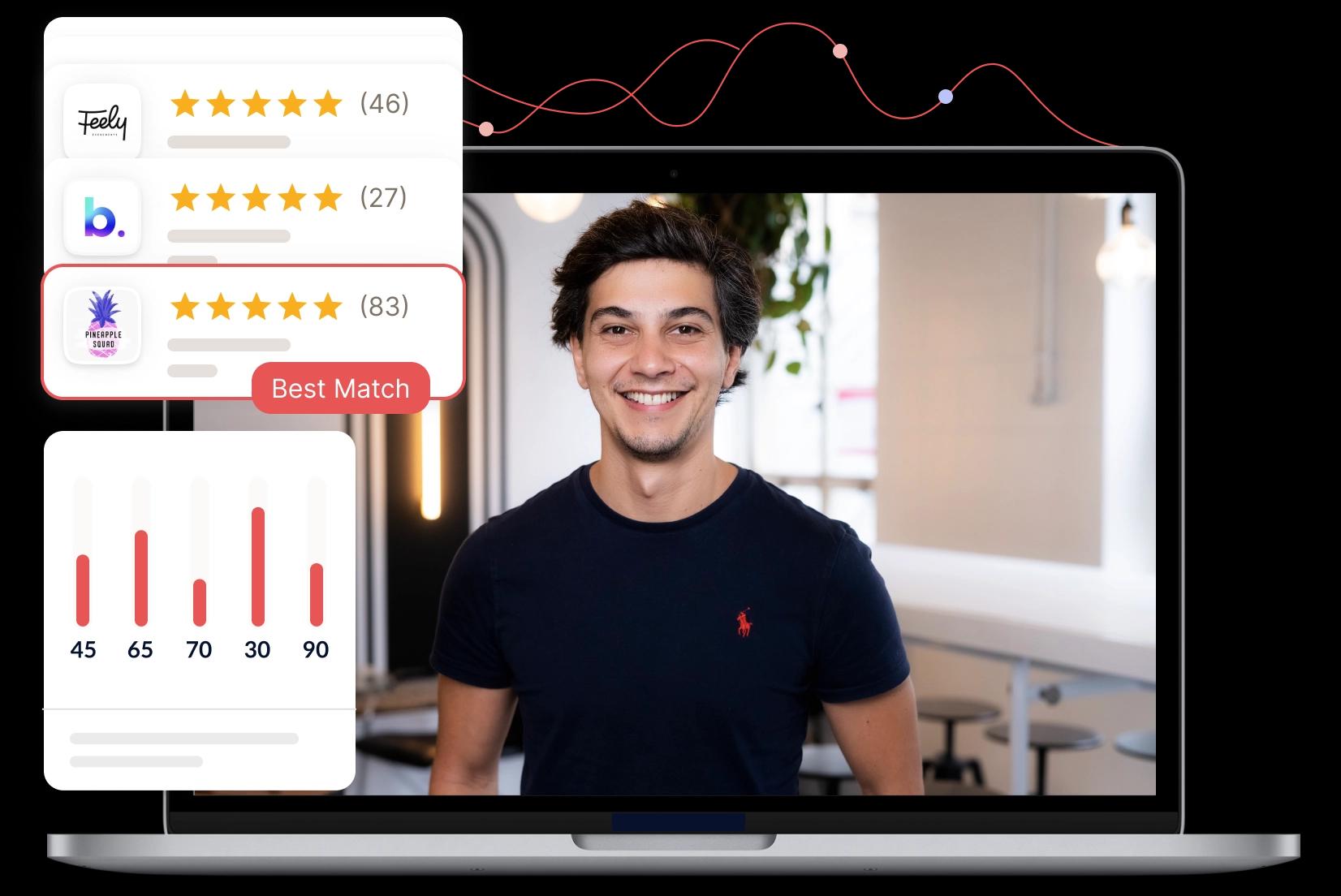We help brands win online through extraordinary web design, development and marketing techniques.
List of the top User Experience Companies in the Netherlands
- 4.6(37 reviews)
Experience design agency specialized in Identity, Development, 3D technology and Ai Content creation
RecommendedAward-winner48 works in Ergonomy (UX/UI)Active in the NetherlandsFrom €3000 for Ergonomy (UX/UI) - RecommendedAward-winner35 works in Ergonomy (UX/UI)Active in the NetherlandsFrom €1000 for Ergonomy (UX/UI)
- 4.9(26 reviews)
We help brands win online through extraordinary web design, development and marketing techniques.
RecommendedAward-winner52 works in Ergonomy (UX/UI)Active in the NetherlandsFrom €1000 for Ergonomy (UX/UI) - RecommendedAward-winner16 works in Ergonomy (UX/UI)Active in the NetherlandsFrom €1000 for Ergonomy (UX/UI)
- RecommendedAward-winner8 works in Ergonomy (UX/UI)Active in the NetherlandsFrom €3000 for Ergonomy (UX/UI)
- (0 review)
Wij helpen ambitieuze bedrijven hun groeidoelstellingen te bereiken met effectieve marketing!
Award-winner3 works in Ergonomy (UX/UI)Active in the NetherlandsFrom €1000 for Ergonomy (UX/UI) - 4.8(14 reviews)
A strategic branding & design agency, working for sustainable lifestyle and tech brands.
RecommendedAward-winner14 works in Ergonomy (UX/UI)Active in the NetherlandsFrom €3000 for Ergonomy (UX/UI) - Award-winner5 works in Ergonomy (UX/UI)Active in the NetherlandsFrom €10000 for Ergonomy (UX/UI)
- RecommendedAward-winner15 works in Ergonomy (UX/UI)Active in the NetherlandsFrom €10000 for Ergonomy (UX/UI)
- Award-winner16 works in Ergonomy (UX/UI)Active in the NetherlandsFrom €3000 for Ergonomy (UX/UI)
- RecommendedAward-winner6 works in Ergonomy (UX/UI)Active in the NetherlandsFrom €1000 for Ergonomy (UX/UI)
- RecommendedAward-winner23 works in Ergonomy (UX/UI)Active in the NetherlandsFrom €10000 for Ergonomy (UX/UI)
- 5(7 reviews)
Driven by design, led by technology. We design and build innovative, human-centered fintech products
Award-winner5 works in Ergonomy (UX/UI)Active in the NetherlandsFrom €10000 for Ergonomy (UX/UI) - Award-winner25 works in Ergonomy (UX/UI)Active in the NetherlandsFrom €1000 for Ergonomy (UX/UI)
- 4.7(15 reviews)
We help our client from discovering opportunities to profitable solutions and everything in between!
RecommendedAward-winner8 works in Ergonomy (UX/UI)Active in the NetherlandsFrom €1000 for Ergonomy (UX/UI) - RecommendedAward-winnerNo work in Ergonomy (UX/UI)Active in the NetherlandsFrom €3000 for Ergonomy (UX/UI)
- RecommendedAward-winnerNo work in Ergonomy (UX/UI)Active in the NetherlandsFrom €1000 for Ergonomy (UX/UI)
- RecommendedAward-winnerNo work in Ergonomy (UX/UI)Active in the NetherlandsFrom €3000 for Ergonomy (UX/UI)
- 5(26 reviews)
Your strategic design partner. We create captivating brands that push you forward.
RecommendedAward-winner14 works in Ergonomy (UX/UI)Active in the NetherlandsFrom €1000 for Ergonomy (UX/UI) - RecommendedAward-winner30 works in Ergonomy (UX/UI)Active in the NetherlandsFrom €2000 for Ergonomy (UX/UI)
